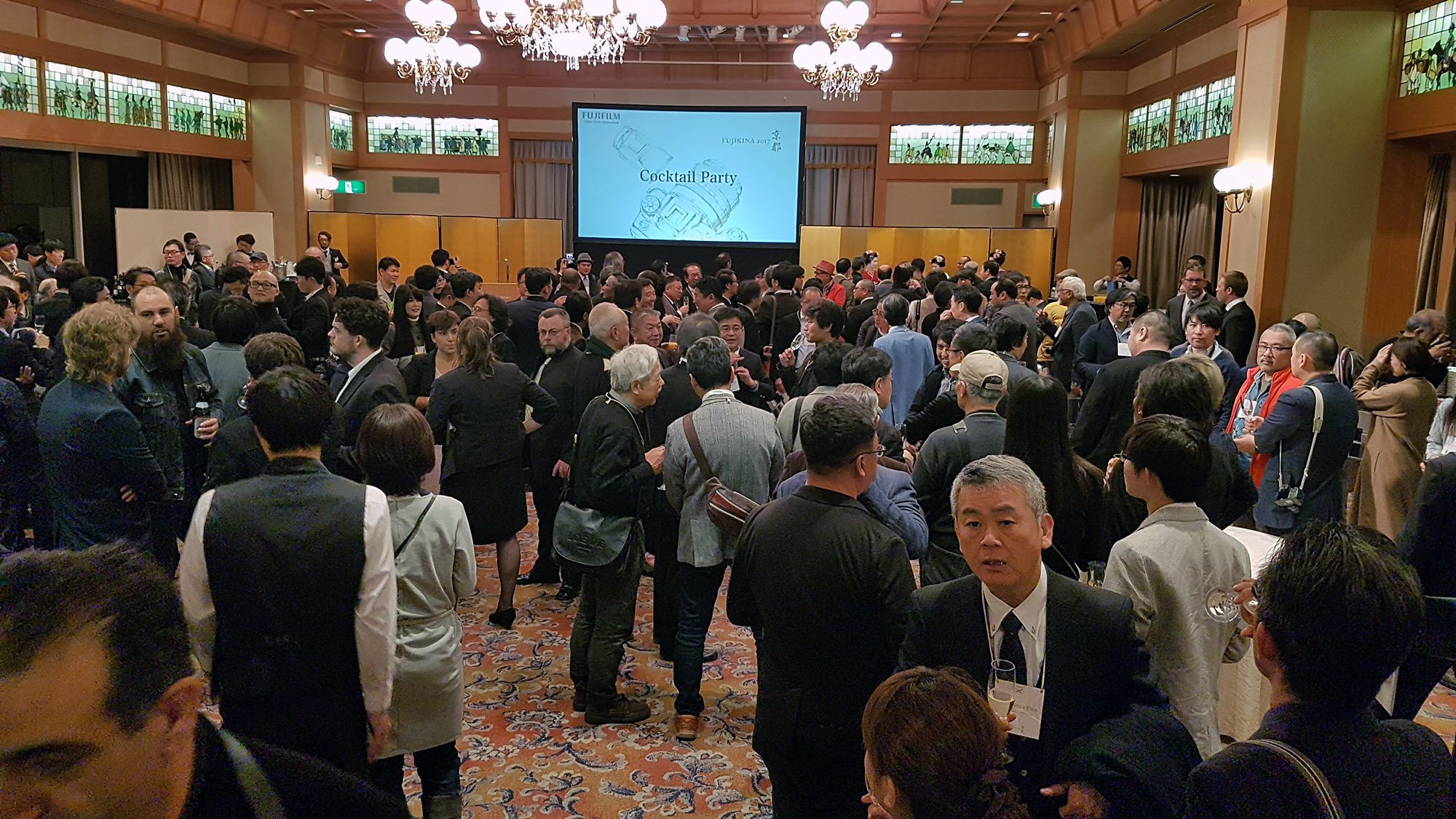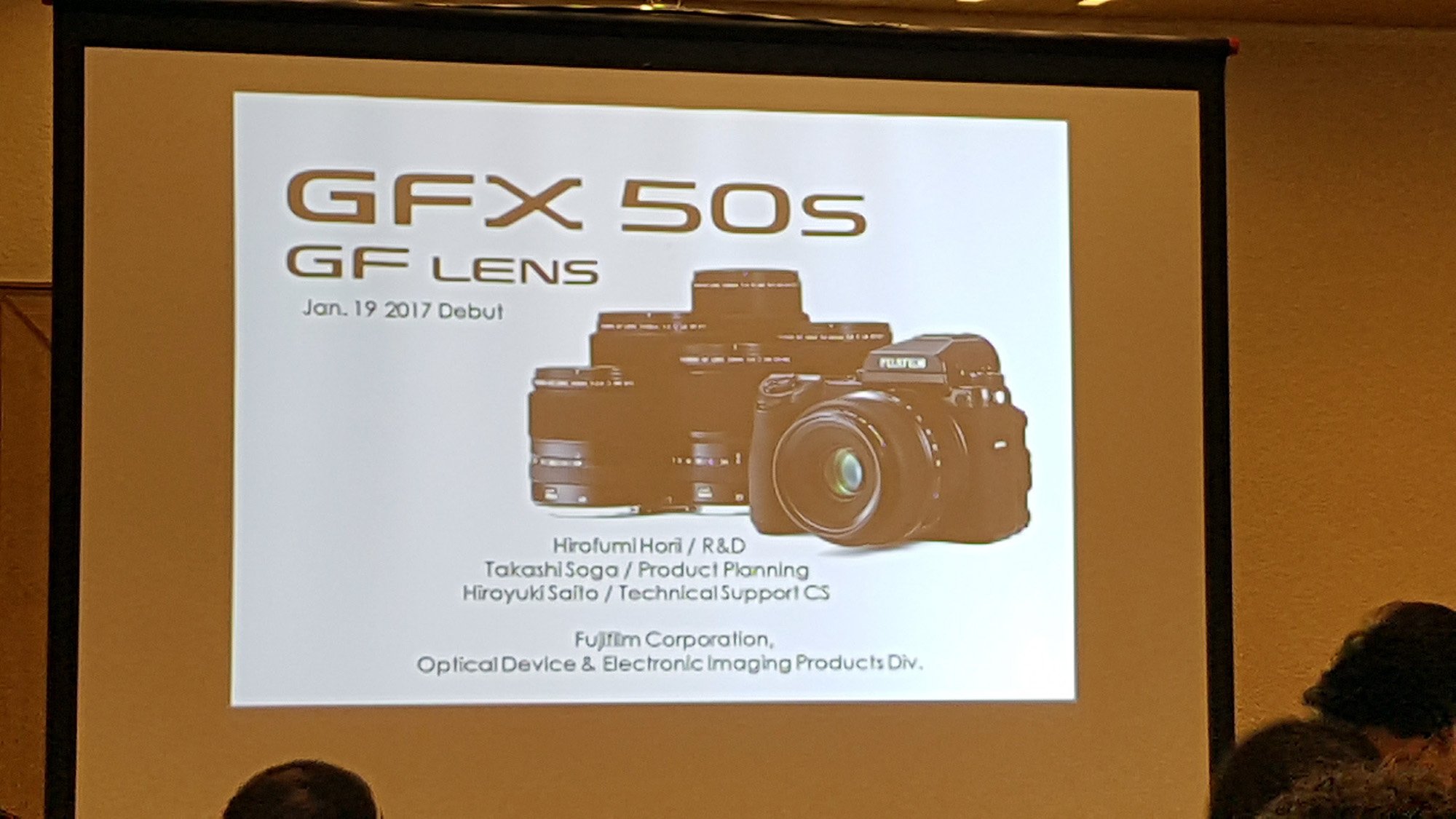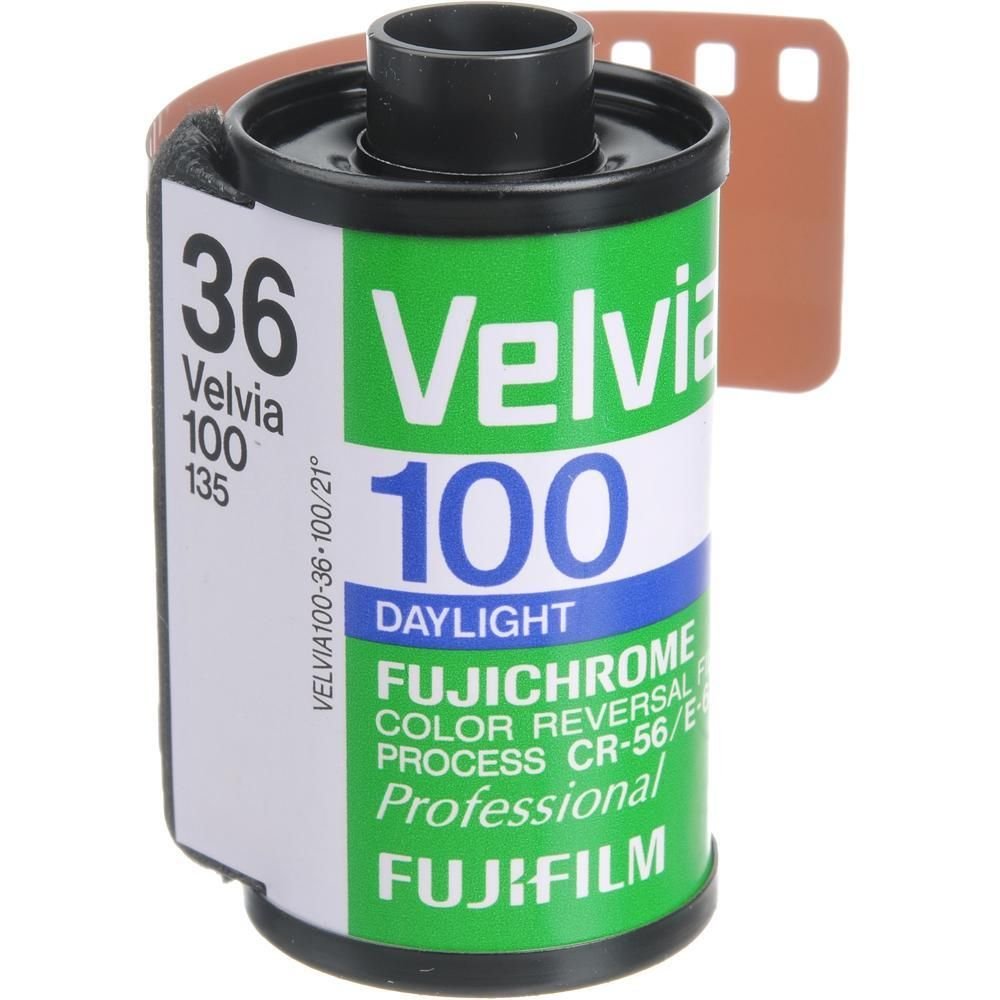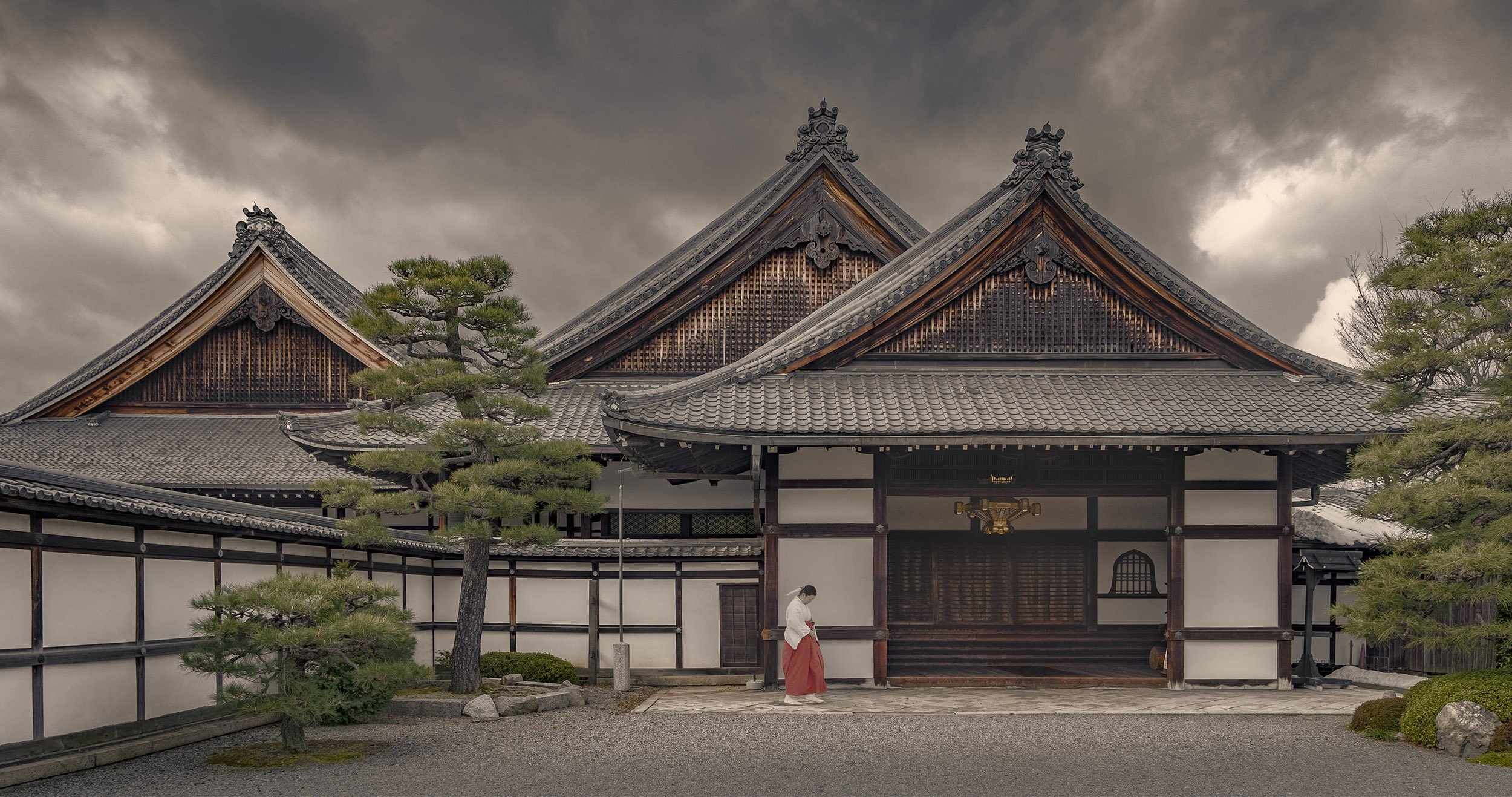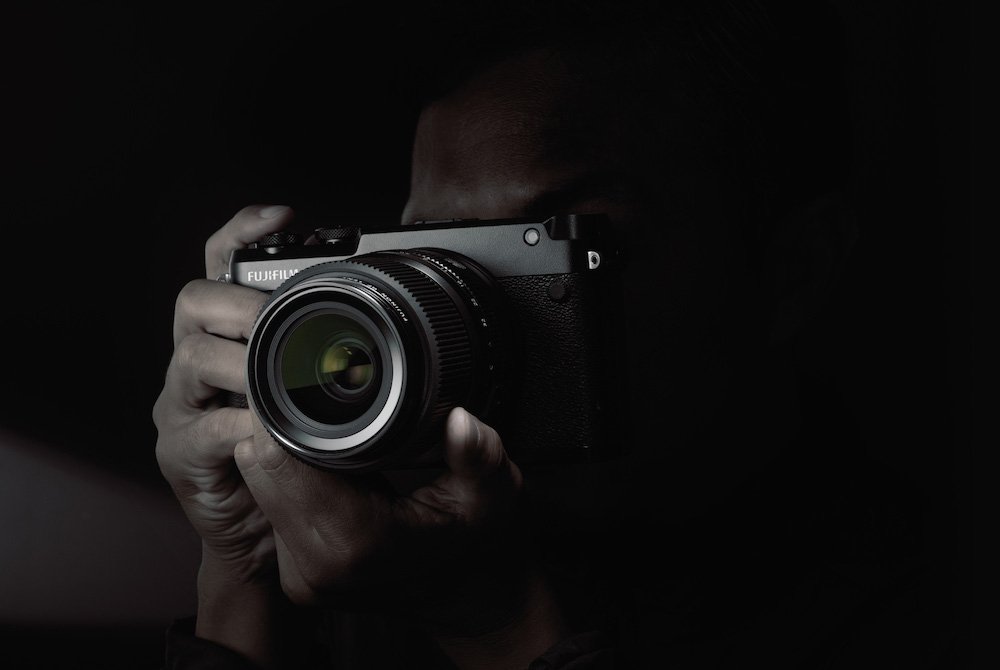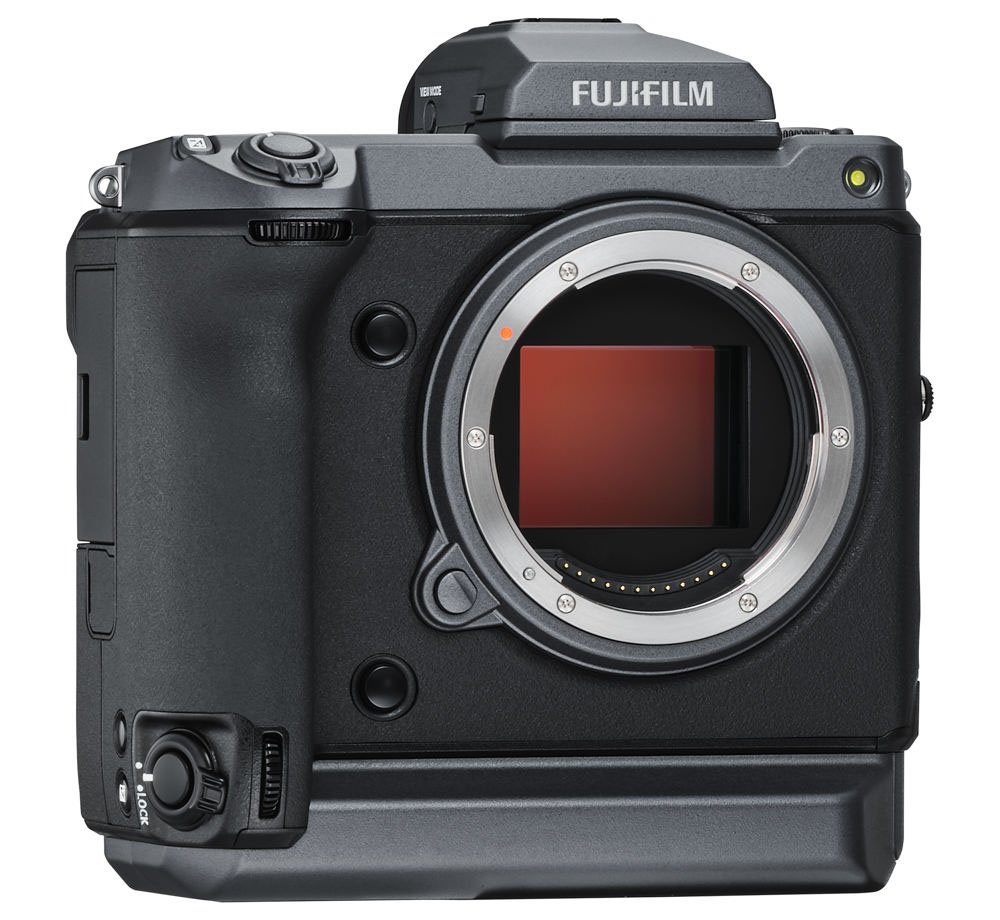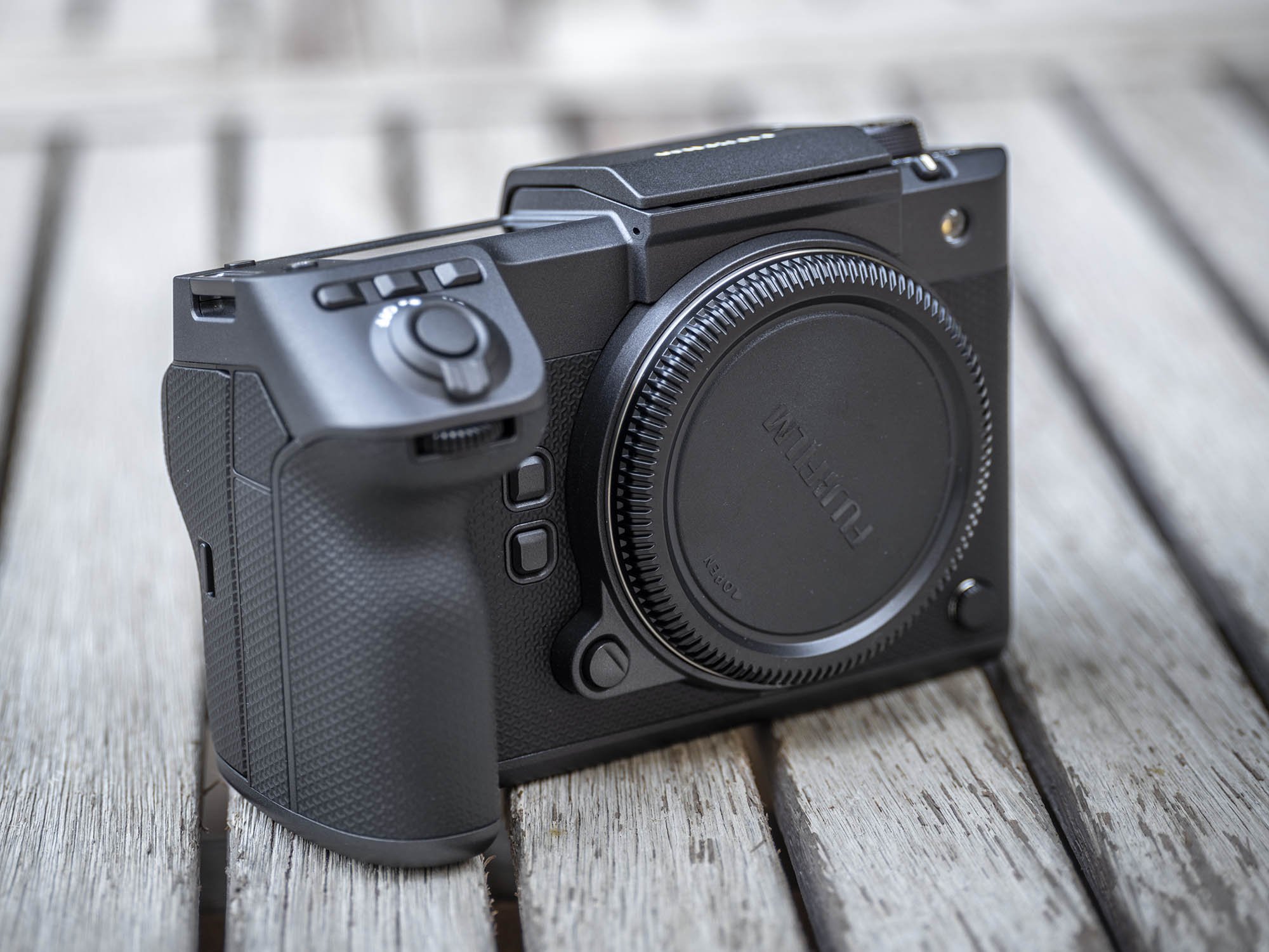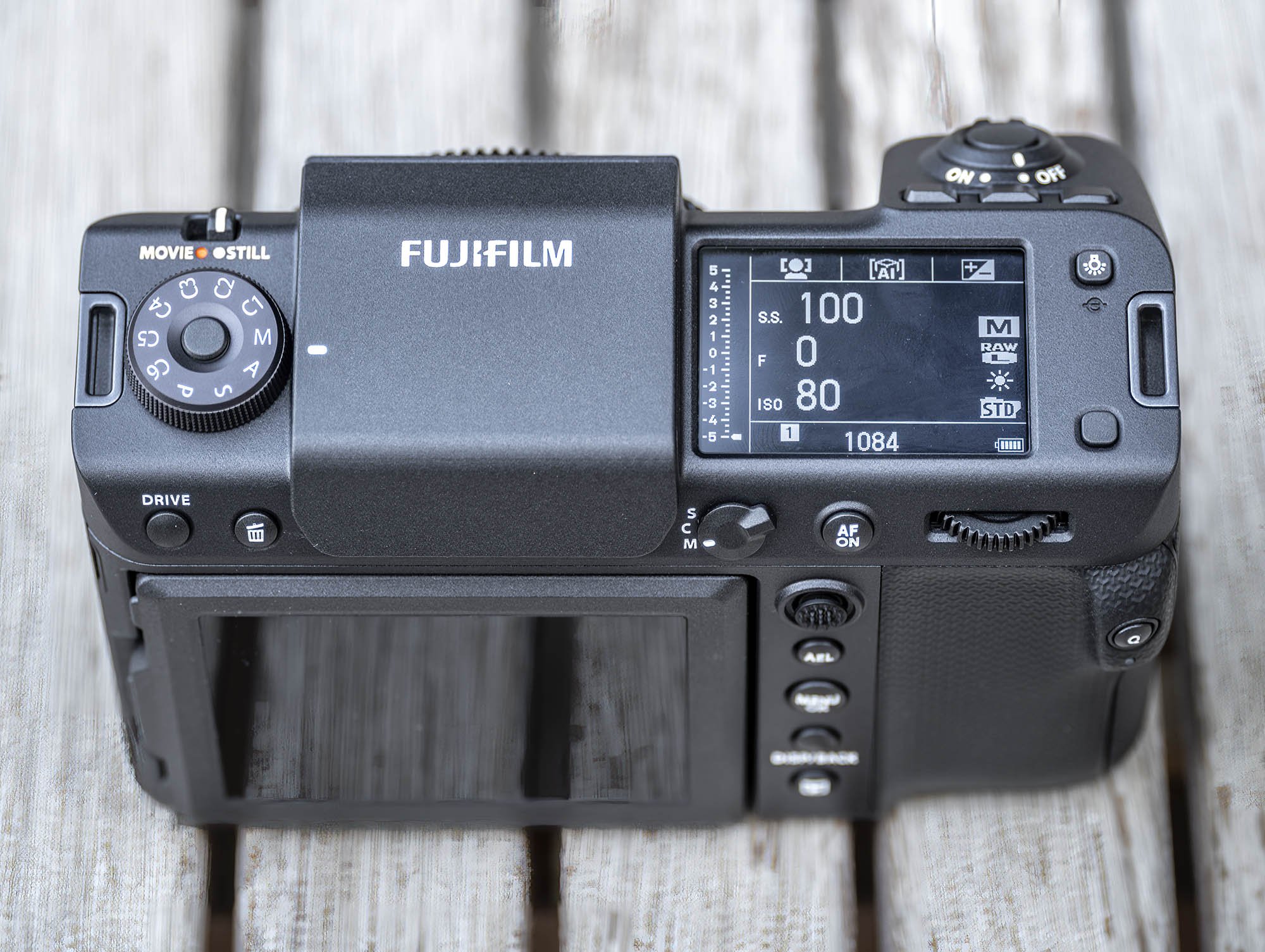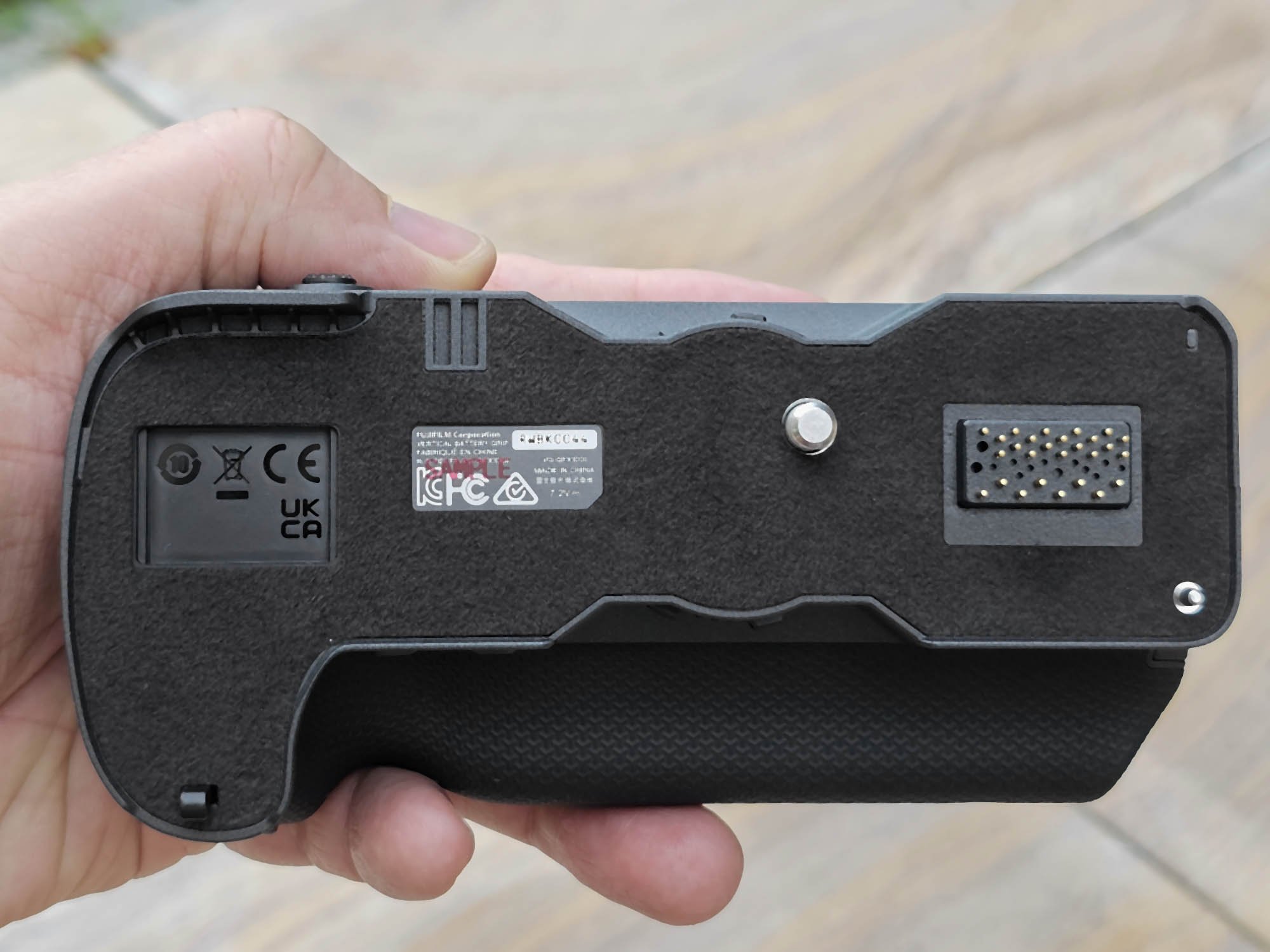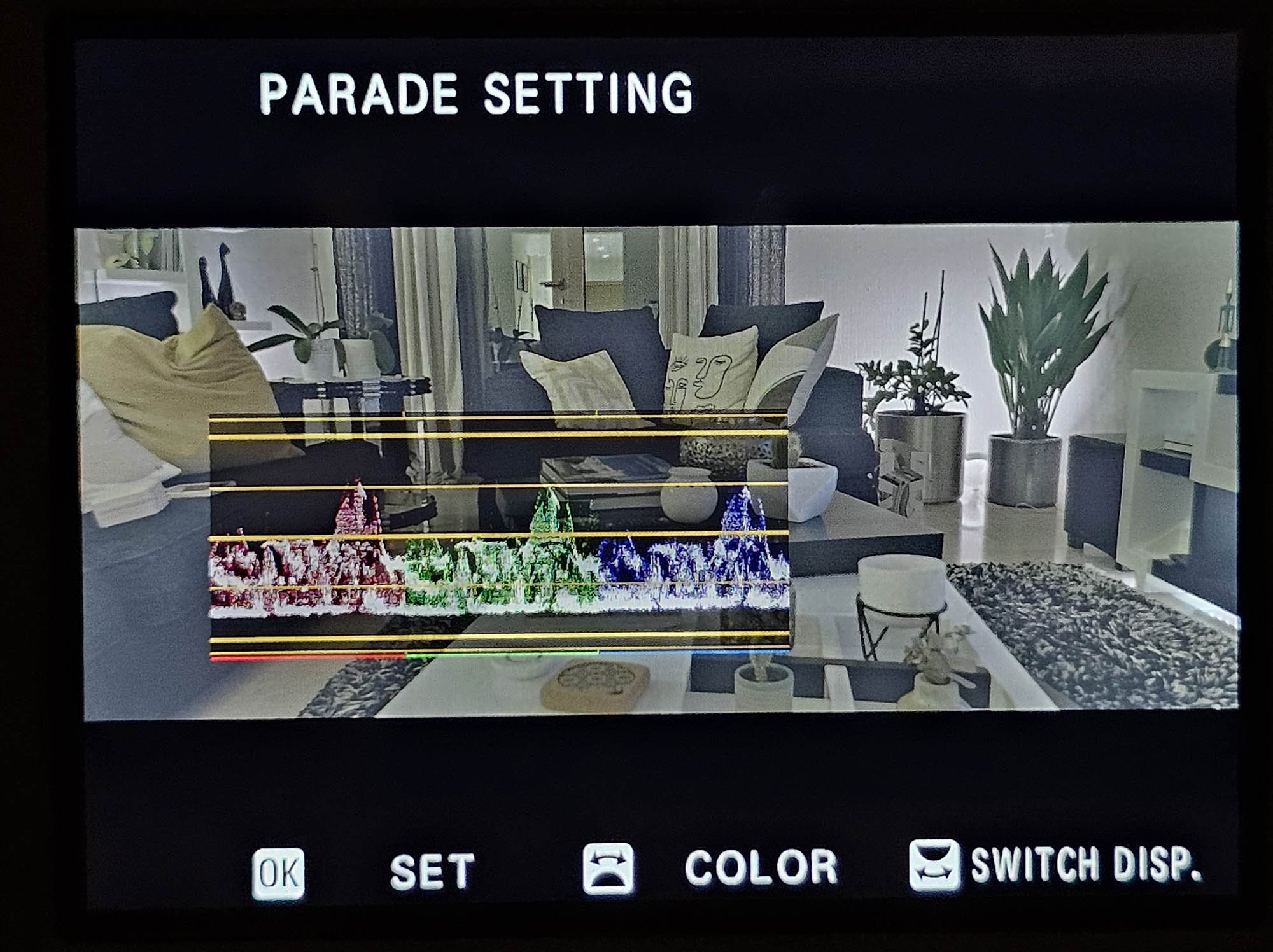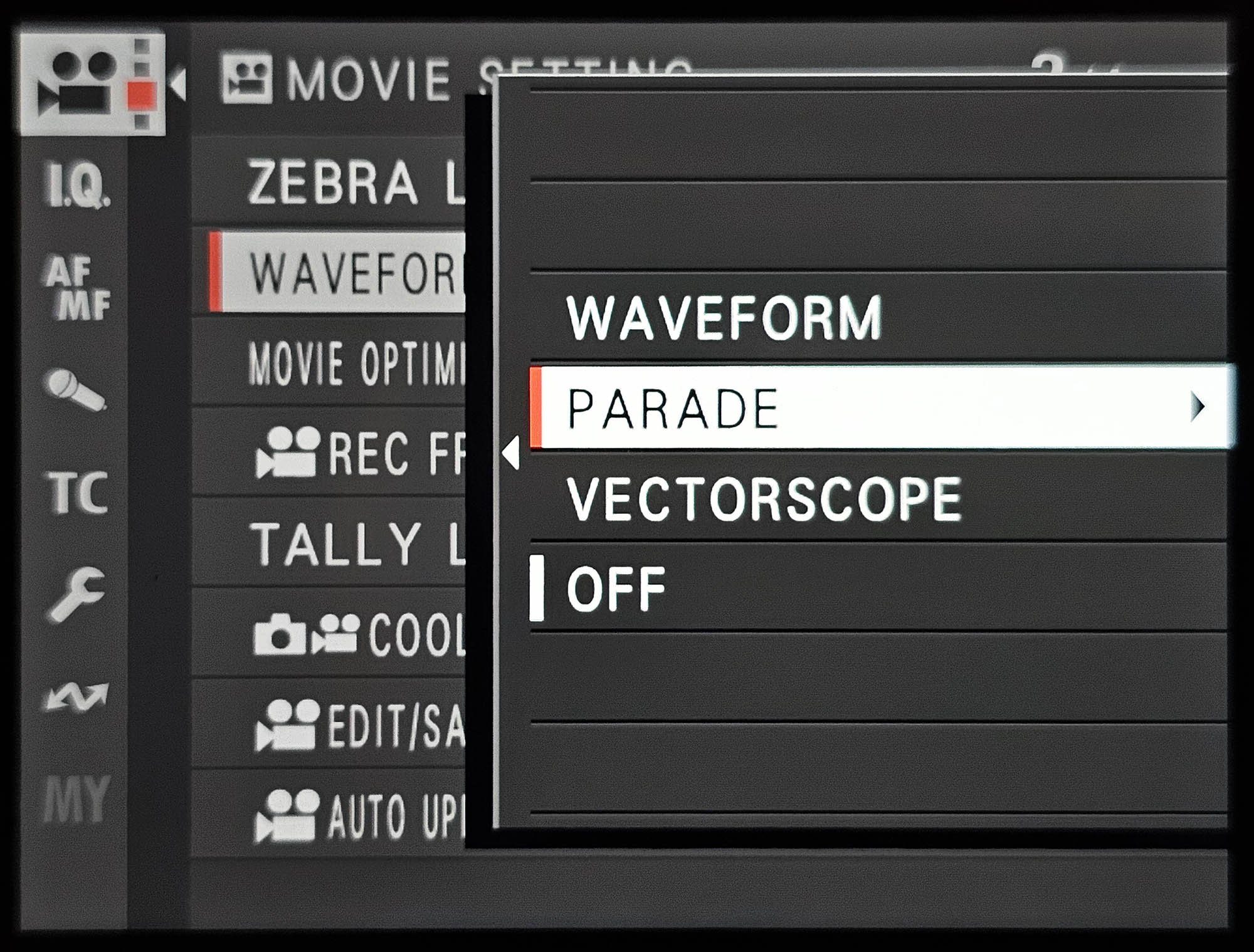THE BEST Medium Format Camera Just GOT BETTER
In 2017, Fujifilm shattered the mold for medium format cameras. 6 years later, they've forged a new path.
HOW MY FUJIFILM JOURNEY STARTED
In February 2017, Fujifilm invited me to Kyoto, Japan, for the launch of the revolutionary GFX line of medium format cameras. This was a major event that changed the landscape of photography. That same month, I transitioned from Canon's Ambassador Program to Fujifilm's. This was a big decision, as I had been heavily invested in Canon gear for over a decade. But I had a good feeling about the team at Fujifilm Middle East in Dubai, and they were very persuasive. So, I took a leap of faith.
Kyoto, Japan, 2017. The launch of the GFX Camera line.
I had no prior experience with Fujifilm cameras, except for their 35mm film rolls, which I loved using in the 90s. I was a big fan of Velvia and Reala Superia 100, but that was the extent of my experience with Fujifilm products. I wasn't sure if I could integrate a GFX camera into my workflow, given my reliance on Canon bodies, lenses, and accessories.
But back to February 2017 in Kyoto. Fujifilm launched the first GFX camera, the surprisingly small and retro-looking GFX 50s. It was no bigger or heavier than my Canon 5D Mark III without the battery grip, and it felt and handled just like any professional DSLR of the time. But one glance at its sensor, which dwarfed the one inside my Canon camera, made me realize that the GFX was something special. Fujifilm also launched a brand-new lens mount, the GF, and the first lens in their lineup was the GF32-64mm, which was light, compact, and very portable. For a medium format camera (as Fujifilm prefers to call it), this was unheard of. Fujifilm had started a revolution.
Fujifilm GFX50s (2017). The camera which changed the course of digital medium format photography.
fUJIFILM GFX 50s
I grabbed a demo camera and took a few hundred shots of Kyoto's stunning sights. This historic city is the perfect testing ground for cameras, with its deep orange torii gates, crimson red, brown, and green castles, golden temples, vibrant green pines, pale blue lakes, and snow-covered branches. It was the ideal scenario to showcase Fujifilm's color science, sensor's dynamic range, lens sharpness, and resolving power.
At first, I struggled to handle the camera. The dials and buttons were new to me, as were the menus. I had developed muscle memory for Canon cameras and could use them blindfolded, which is normal after 10 years of use. But luckily, GFX cameras can be fully customized to feel and act like any camera brand or model. I quickly set the front and rear dials to act like the dials on the Canon 5D, with the front dial for shutter speed and the rear dial for aperture. I also assigned the ISO setting button to one of the many available function buttons. As soon as I made these changes, I felt immediately at home.
With no RAW file converter available at the time, I could only shoot in JPEG mode. But I processed my photos with the built-in film simulation, selecting Velvia, one of Fujifilm's greatest slide films, known for its punchy blues, vivid greens, and intense contrast.
At the end of a wonderful day in Kyoto, after dinner with friends, I headed back to my hotel. Impatiently, I copied the photos to my laptop and opened them one by one. I gasped.
These unedited, Velvia-simulated photos glowed with a warmth and radiance I hadn't experienced since the days of slide film projected on a darkroom wall. It wasn't just the higher resolution or sharpness I admired. Yes, the GFX 50s had total command of the scenes I was photographing, with no part of an image under- or overexposed and every detail beautifully rendered, exactly as I remembered seeing it with my own eyes. But that's not why I loved these images.
The GFX 50s enabled me to capture the soul, the essence of Kyoto.
I knew at that moment that I wouldn't be going back to my DSLR. The GFX platform revived my passion for photography, and I wanted to be a part of this new journey. In the next few years, the Fujifilm GFX 50s became my primary camera. I took it with me on my personal travels because it was compact and light. It was also my main camera on all professional, commissioned shoots.
While I absolutely loved the images out of Fujifilm GFX 50S, working with it was not a perfect experience. It was a first-generation product and like all novel products, it had its shortcomings. The biggest problem was the lack of native GF lenses. As an architectural photographer who shot with Canon cameras, I was using mainly tilt-shift lenses from the same brand because Fujifilm did not produce their own. I was forced to use 3rd party full frame lenses with GF adapters, which is far from ideal.
The speed of the camera was lacking as well, autofocus wasn’t the greatest and there was no in-camera or optical stabilization. Shooting without the tripod wasn’t recommended with GFX 50s. Battery life was also poor compared to DSLR’s.
Fujifilm GFX 50R
FUJIFILM GFX 50R
But Fujifilm was determined to make the GFX a success. In 2018, they launched the GFX 50R. It was a rangefinder style, very compact medium format camera without the EVF. It instantly became the travel and street photographer’s dream camera. It lacked optical stabilizaiton and other fancy features, but it was the smallest medium format camera ever, with an image quality worthy of a GFX name. Things started to escalate at this point, and culminated with the next big thing. The GFX 100.
Fujifilm GFX100, the massively impressive, next generation, 100-megapixel medium format camera
FUJIFILM GFX 100
2019 was a milestone year. Fujifilm unveiled another major camera, now legendary GFX 100. I traveled to Tokyo to witness its launch. GFX 100 addressed virtually all the GFX50s’ issues. Autofocus got faster and accurate. The camera received a new CPU, and it became much quicker in general. But the star of this release was without a doubt its massive 100 megapixels sensor which was a major showstopper. Fujifilm made history by adding in-body image stabilization (IBIS) to the GFX 100, the world's first medium format camera with a stabilized sensor. I saw it being made and assembled. It’s a piece of engineering marvel. The introduction of IBIS greatly expanded the utility of GFX 100 which has now become a great handheld, not only studio-based camera. They also dramatically improved the EVF and added a host of new features…
Fujikina Tokyo (2019), GFX 100 launch
Despite its shortcomings, the Fujifilm GFX system has revolutionized medium format photography. It has made medium format cameras more accessible and affordable, and it has opened new creative possibilities for photographers.
Here are some of the key improvements that Fujifilm made to the GFX 100:
Faster and more accurate autofocus
New CPU for faster performance
Massive 100-megapixel sensor
In-body image stabilization (IBIS)
Dramatically improved EVF
Host of new features
Fujifilm engineers didn't rest on their laurels after the success of the GFX 100. In 2021, they released the GFX 100S, which fixed some of the issues with the GFX 100 and made it more affordable. The GFX 100S was smaller and lighter, but it retained IBIS despite its tiny chassis. This made it the first 100-megapixel camera that was truly portable. The GFX 100S also had fewer features than the GFX 100, but it was $4,000 cheaper, making it more accessible to photographers who were looking to upgrade from full-frame cameras.
FUJIFILM GFX 100S (2021). The world’s smallest 100-megapixels medium format digital camera.
AND FINALLY, THE Camera THat Rules THem All, The FUJIFILM GFX 100II
On 12th September 2023, Fujifilm released the GFX 100 II, the greatest GFX camera to date. It improves upon the GFX 100 in literally every way.
Fujifilm GFX 100II (2023), The latest and greatest GFX camera ever made
With the battery grip, the GFX 100 II becomes a serious studio camera. Without the battery grip, it is an ideal travel, or street photographer’s camera.
IBIS of GFX 100II now compensates for 8 stops of light, up from 5.5 stops in the GFX 100. The EVF has been upgraded to a glorious 9.44 million pixels with a 120Hz refresh rate, which is insane. This is literally double the resolution of the EVF in the Mark I. I have been using the GFX 100 II for three days, and the EVF is simply incredible. You can still use the existing tiltable EVF adapter, which is fantastic. I don't even remove it from my camera anymore because it is so useful.
Fujifilm GFX 100 II with an EVF, EVF tilt adapter, fit with Fujinon GF30mm F5.6 T/S lens
AUTOFOCUS
Fujifilm went all out on autofocus with the GFX 100 II. It has the best autofocus system in any Fujifilm camera to date. It is the first Fujifilm camera to use the new AI-based subject-detection AF system, which is developed with Deep Learning technology. This new AF system can detect and track a wide range of subjects, including people, animals, birds, and vehicles, even in low light conditions. In addition to the new AI-based subject-detection AF system, the GFX 100 II also has the latest prediction AF algorithm that was developed for the Fujifilm X-H2S. This algorithm allows the camera to predict the future movement of subjects and focus on them more accurately.
PERFORMANCE
The Fujifilm GFX 100 II can shoot 8 frames per second, which is 50% faster than the GFX 100. Combined with the fastest and most intelligent autofocus on any Fujifilm camera, the GFX 100 II is now a serious contender for action photography.
The GFX 100 II also has a new X-processor 5, which is 50% faster than the one in the GFX 100 Mark I. This makes the camera feel much smoother in operation, from shifting through images on the rear LCD to zooming, panning, and saving or formatting memory cards. Every aspect of working with the new camera feels more refined.
LCD DISPLAY
The LCD display has remained the same, which is a good thing because the original one was already fantastic. It has a 3-way tilting design, tilting up 90 degrees, down 45 degrees, and to the right by 60 degrees. It is bright enough to see all information clearly even in daylight. Focusing on it is a delight; it is crisp and touch sensitive.
body design
The GFX 100 II is Fujifilm's flagship medium format camera, and it shows. It's slightly taller than the GFX 100, with a new design that's both contemporary and stylish. The chiseled edges and muscular surfaces are reminiscent of the latest generation of premium cars, electronic devices, smartphones, and contemporary architecture. The finishes are refined, the lines are cleaner, and every button seems intelligently placed.
One of the most noticeable changes is the new sloping top side, which brings the OLED display closer to the eye. This makes it easier to see your settings and compose your shots, even when you're holding the camera up to your face. The battery grip locking wheel has protruding teeth that provide a strong grip during attachment.
The movie/still sliding switch is also practical and easily accessible. Switch between shooting modes has never been easier.
The GFX 100 II is a very well-designed camera. It's clear that Fujifilm has put a lot of thought into every detail.
LEFT: GFX 100 II. RIGHT: GFX 100
THE TOP LCD
The top LCD is fully customizable and displays all the essential information you need to know, such as shooting mode, exposure settings, and battery life. The second sub-display from the previous model has been removed, which I don't mind as I never found myself using it. I welcome the three function buttons next to the shutter release button. They're perfectly positioned, and I've assigned them to electronic level, ISO, and IBIS on/off. There are also new function buttons on the front of the camera, but I'm not sure I'll use them very often.
Gorgeous top LCD stay lit even when the camera is turned off
PORTS
The full-sized HDMI port is a welcome addition. I was never a fan of Mini or Micro HDMI ports because they are too fragile. The 1000 Mbits LAN port will be appreciated by studio photographers who require fast and reliable transfers to their computers. The GFX 100II is also the world's first camera to integrate Frame.IO, a new protocol that is changing the way photographers edit and collaborate with their teams and clients.
I was very happy to see the CFexpress Type B card port next to the SD UHS II. CFexpress cards are beasts - 5x faster than UHS-II and their capacity goes up to 1.3TB at the time of writing. That’s not just “nice”, it’s essential for a camera like GFX 100 and its massive, 16-bit, 200 MB RAW files!
Another surprise was the new Reala Ace film simulation which, for now, is exclusive to GFX 100II. Fujilim Reala had a legendary status back in the 90s & 00s when it was still sold. What made it famous was a revolutionary 5th color substrate, light cyan. The inclusion of cyan allowed Reala to reproduce very natural and realistic looking skin tones and all colors in general. It’s very cool to see this simulation applied to your jpegs. You now have a good argument for NOT shooting RAW!
GFX 100 II is the only Fujifilm camera with Reala Ace film simulation. For now.
BATTERY LIFE
The Fujifilm GFX 100II uses the NP-W235 battery, which is not compatible with the GFX 100 Mk I. However, the good news is that the NP-W235 battery lasts much longer than the older battery.
During a recent one-day shoot at the Sheikh Zayed Grand Mosque in Abu Dhabi, I took 760 photos with the GFX 100II. I used a battery grip with two batteries, and I also had a battery inside the camera body. At the end of the shoot, I had only used up only two bars out of five on the first battery, while the other two batteries remained at full charge! I was truly blown away by how little power the GFX 100II used up.
VIDEO RECORDING CAPABILITIES
The GFX 100II's video recording capabilities have received a major upgrade. This really needs to be an entirely separate review, because it is so comprehensive. GFX 100 II can now record:
8K video at 30fps
4K DCI video at up to 60fps
Full HD video at up to 240fps
2.7K DCI video at up to 120fps
The GFX 100 II can encode footage in a wide variety of ProRes codecs, from 422 up to RAW HQ, and DNxHD HQX/MXF. It can even record internally in Anamorphic mode with de-squeeze preview in a variety of squeeze ratios from 1.3x to 2.0x.
Fujifilm plans to release a native GF cine lens for the GFX 100II in the near future. This lens will be fully electronic and will allow cinematographers to take full advantage of the camera's video capabilities. In the meantime, cinematographers can already use Fujinon Premista and Cabrio cine lenses with the GFX 100II.
Expansion
In addition to the above, here are some other things worth noting about the GFX 100II's video capabilities:
The camera has a full-size HDMI port, which allows for uncompressed video output to an external recorder.
The GFX 100II has a built-in fan, which helps to keep the camera cool during extended video recording sessions.
The camera has a variety of video assist features, such as waveform monitor, vectorscope, and focus peaking.
GFX 100II has become a powerful and versatile video camera. It is the perfect choice for cinematographers who are looking for a medium format camera with exceptional image quality and a wide range of features.
I’ve compiled a collection of video recording menus featuring various settings, resolutions, aspect ratios, codecs, gamma curves, frame rates and picture monitoring modes. There’s so much going on in there. It’s all looking very impressive!
THINGS I AM NOT A FAN OF
There’s no perfect camera and GFX 100II is no exception. Here are a couple areas I'd like to see improved with future firmware updates, unless it’s a hardware limitation.
the option to disable camera charging using a USB-C connector. The GFX 100 II's USB port will believe you are attempting to charge a connected third-party device with an inbuilt battery, such as the Camranger II. This will reduce Camranger's power 50% more quickly than usual.
The battery grip's two function buttons are situated near the pinky of your hand. This is advantageous if you want quick access to specific special features, but disadvantageous if you don't want to accidentally press them. This will take place frequently as they are concealed.
Like GFX 100, GFX 100 II is still unable to determine whether the camera is mounted on a tripod. Why does this matter? The sensor will drift while hunting for vibrations that aren't there if IBIS is left on and your exposure is longer than 0.5 seconds, which can result in motion blur in your photographs. It frequently happens to me, and it's quite challenging to repair in post.
conclusion
The Fujifilm GFX 100II is the pinnacle of the GFX series, incorporating the best features of its predecessors with none of the drawbacks. It is fast, compact, lightweight, and polished, with excellent autofocus and image stabilization. It takes stunning images with incredible detail and clarity.
Fujifilm's relentless pursuit of excellence in its GFX cameras, combined with its careful attention to customer feedback, has resulted in a rapid cadence of new camera releases and firmware updates that have greatly improved the hardware capabilities of the GFX system.
Six years ago, Fujifilm's bet against full-frame cameras seemed perplexing. But the company has since captured 25% of the medium format market share, trailing only behind Hasselblad. GFX cameras are aggressively priced, and Fujifilm has released a wide range of GF lenses, with new lenses released on a regular basis. Offering excellent image quality in a compact and lightweight design, GFX cameras have become a popular choice for photographers of all levels.
To see what kind of images the GFX 100II can produce, head out to my other blog about the Fujinon GF30mm F5.6 T/S (tilt-shift) lens.
Thank you for taking the time to read my review of the Fujifilm GFX 100II. writing reviews can be time-consuming and effort-intensive, so I appreciate your support.
If you found my review helpful and are considering purchasing Fujifilm GFX 100II, I would be grateful if you would consider using my affiliate link. When you click on an affiliate link and make a purchase, I earn a small commission. This helps me to continue creating helpful reviews and content for my readers.
Here is my affiliate link for Fujifilm GFX 100II https://adorama.rfvk.net/EK25KP
Thank you again for your support!
Sincerely. Beno Saradzic
P.S. If you have any questions about Fujifilm GFX 100II, please feel free to leave a comment below or contact me directly. I am always happy to help!





